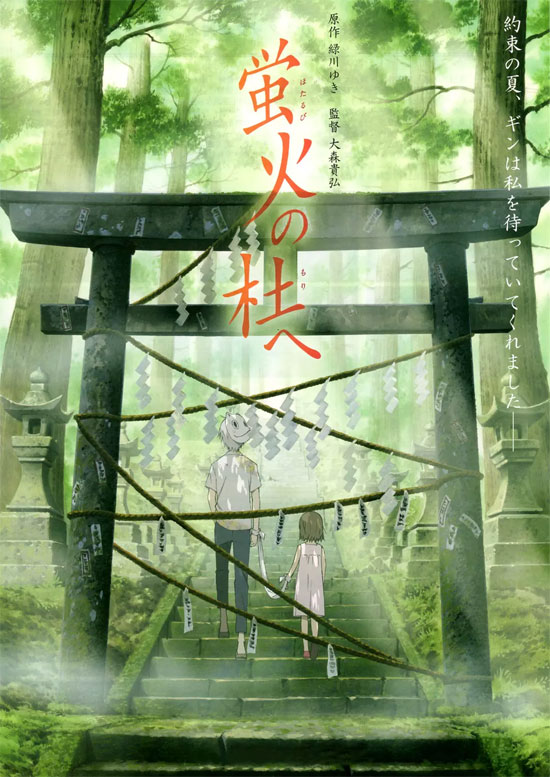Film Name: 萤火之森 / Hotarubi no mori e / To the Forest of Firefly Lights / 蛍火の杜へ

When Director Lin Wenxiao’s “Snow Children” became an eternal tearjerker classic in the hearts of China’s post-80s generation, seeing “Hotarubi no mori e” immediately brought that “snowman” to mind. Both were destined to depart from the start—one devoted to virtue, the other experiencing love. Much like the “mono no aware” sentiment I’ve often mentioned regarding Japanese cherry blossoms, the Japanese cherish the moment when things bloom at their most splendid—even if they fade swiftly afterward. The instant Takekawa Hotaru and Gin clasped each other tightly mirrored the fleeting brilliance of cherry blossoms bursting into full bloom, only for their petals to scatter like rain moments later.
The full bloom of cherry blossoms and the subsequent shower of petals must be inseparable. If there were only the full bloom without the swift withering, the bloom itself would lose its meaning as the glorious unfolding of life. Thus, Hotaru and Gin’s embrace must be followed by Gin drifting away like a cherry blossom shower; otherwise, the grandeur of their love in that instant would not be revealed.
Another highlight of this film is the romance between a girl growing up and a boy who remains eternally young. It portrays with extraordinary subtlety her journey from yearning for maturity, to relishing the process of growing up, to the psychological hint of her fear of adulthood. Just as she could once endure a year’s wait, meeting the boy only in summer for a Qixi-style reunion; Later, she resolves she can wait no longer—her love deepens, yet she fears her own continued growth.
Gin’s mask is a crucial prop, not for any magical power, but for its fundamental function: concealing his expressions, keeping his emotions deliberately controlled. Yet this single purpose makes it profoundly potent. Each time the camera focused on Yin’s mask, I found myself wondering: What expression did he wear at that very moment? What emotions stirred within him? While some masks conceal identity, Yin’s mask entirely obscured his feelings, leaving vast room for the audience’s imagination. When he finally removed it, it marked his refusal to deliberately suppress his emotions any longer. Only then could the audience truly connect with this boy through the language of his eyes.
Yin’s dilemma lies in loving Hotaru yet daring not to approach her, for doing so would cost him his very existence and the chance to protect her. Hotaru’s dilemma is loving Yin yet unable to reach out to him, for doing so would mean losing the boy who stirs her heart. Thus they maintain the status quo, though this equilibrium itself is precarious: Hotaru continues to grow, while Gin remains forever young. Fortunately, an unexpected twist shatters this balance, culminating in the breathtaking moment described at the outset.
Incidentally, the film’s most poignant scene unfolds in those fleeting seconds when Hotaru finally throws herself at Gin, embracing him until he becomes nothing but a pile of clothes. From a technical perspective, these seemingly simple movements demand exceptionally high standards for the original artwork. It must accurately depict the characters’ actions while capturing every subtle tremor to convey emotion. Chinese animation currently lacks this level of artistic mastery. Even if we conceive such stories, it remains incredibly difficult to express them precisely through brushwork. So, let us continue to wait patiently, biding our time.
Please specify:Anime Phone Cases » Hotarubi no mori e 2011 Animation Film Review: A Warm Embrace with the “Snowman”